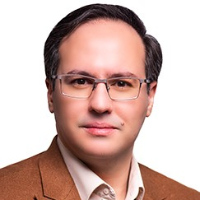Analysis of Material Flow and Phase Transformation in Friction Hydro-Pillar Processing of 1045 Steel
Author(s):
Article Type:
Research/Original Article (دارای رتبه معتبر)
Abstract:
In the present study, a 3D finite element model was developed using DEFORM commercial software to analyse the material flow and phase transformation, as two key phenomena affecting the joint properties in friction hydro-pillar processing of 1045 steel alloy. The microstructure changes significantly due to the high temperature and strain rate. The final microstructure was intergranular pearlite and grain boundary allotriomorphic ferrite. Pearlite was the dominant phase at the final microstructure; thus, its volume fraction was used to validate the model where a good agreement was obtained with the experiment. According to the model, the pearlite volume fraction varies from 100% to 70% moving from the bottom of the stud to the top. The model suggests an inverse relation between the strain rate and pearlite volume fraction. The highest temperature which was experienced in the welding step was 1490 ºC while it dropped to 890 ºC in the forging step. Downward and then radial material flow was detected in the welding step while upward extrusion of material was the dominant material flow pattern during the forging step. Flash was formed mainly in the forging step from stud side material.
Keywords:
Language:
English
Published:
International Journal of Advanced Design and Manufacturing Technology, Volume:13 Issue: 4, Dec 2020
Pages:
31 to 37
https://www.magiran.com/p2209435
سامانه نویسندگان
مقالات دیگری از این نویسنده (گان)
-
Statistical Analysis of Quenching & Partitioning Effects on Mechanical Properties of 1.7102 Steel Using ANOVA Technique
A.A. Abedini, H. Rastegari, S.M. Emam *, S.M.H. Seyedkashi
Iranian Journal of Materials Forming, Autumn 2024 -
A New Ultrasonic-assisted Simple Shear Extrusion Process in Production of Ultrafine Grained Copper
M. Balali, S. M. H. Seyedkashi *, A. Hasanabadi, H. Gorji, H. Baseri, M. Khosravi
International Journal of Engineering, Apr 2025



